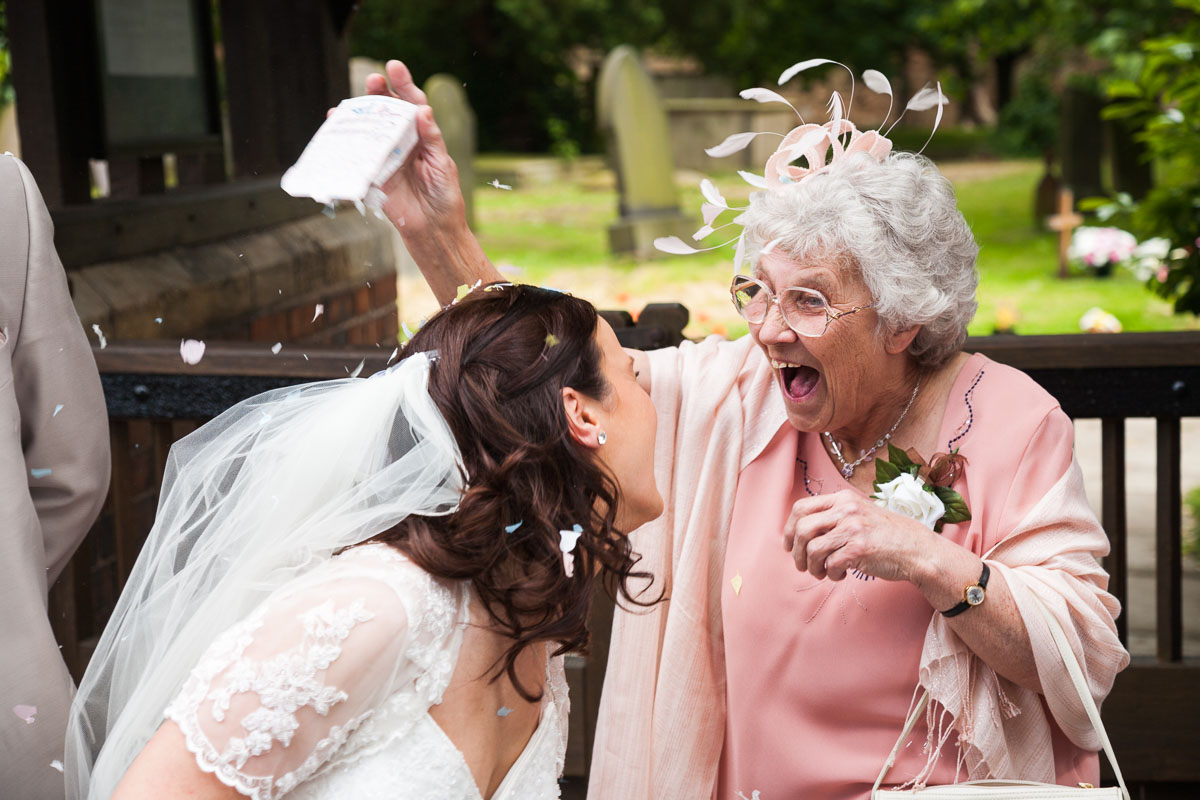I’ve spent twenty glorious (sometimes gruelling) years as an international award-winning wedding photographer in Birmingham. Over those years, I’ve learned that knowing how to photograph a wedding is about far more than camera settings or lens choices—it’s about empathy, timing, and understanding people.
Today, as I focus on my academic career and work as a psychology professor, I realise that photography and psychology have many things in common: both depend on reading emotions, predicting behaviour, and noticing the finer details.
In this post, I’ll walk you through how to photograph a wedding (like a pro) from start to finish—covering each part of the day. For example:
- Morning preparations
- Ceremony
- Group shots
- Portraits of the Bride and Groom
- Reception
- Toasts and speeches
- Details
- Cake cutting
- First dance
And, throughout, I’ll remind you what makes wedding photography timeless: capturing emotion, humour, action, kids (being kids), and the quiet work of vendors that makes the day possible.
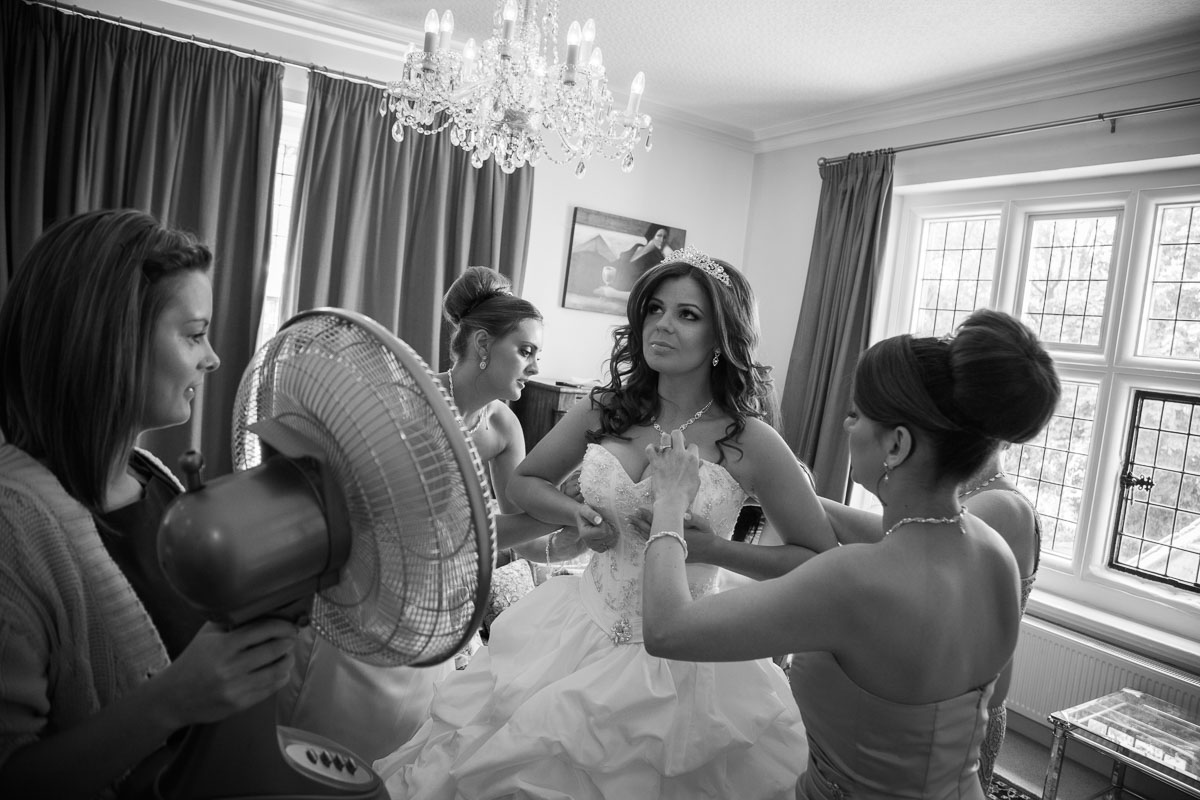
How to Photograph a Wedding: Morning Preparations
The morning of the wedding is where the story begins—full of nervous energy, quiet reflection, and beautifully chaotic details.
When photographing the morning preparations, start with the objects that tell the story. Such as:
- Rings, invitations, perfume, shoes, heirlooms.
- The dress (hanging in a door, window, or as found).
- The groom’s cufflinks as a groomsman adjusts them.
Then, move into the human moments: a laugh over breakfast, a nervous parent pacing, a glance in a mirror that catches anticipation.
Tips for how to photograph a wedding morning:
- Use natural light whenever possible—it creates soft, emotional, and timeless images.
- Step back and observe rather than pose. Let genuine interactions unfold.
- Look for emotions and humour (e.g., a bridesmaid joking to calm nerves, a mother wiping away a tear).
The getting-ready phase sets the tone for the entire day. Thus, mastering this part is essential to understanding how to photograph a wedding with authenticity and genuine emotion.
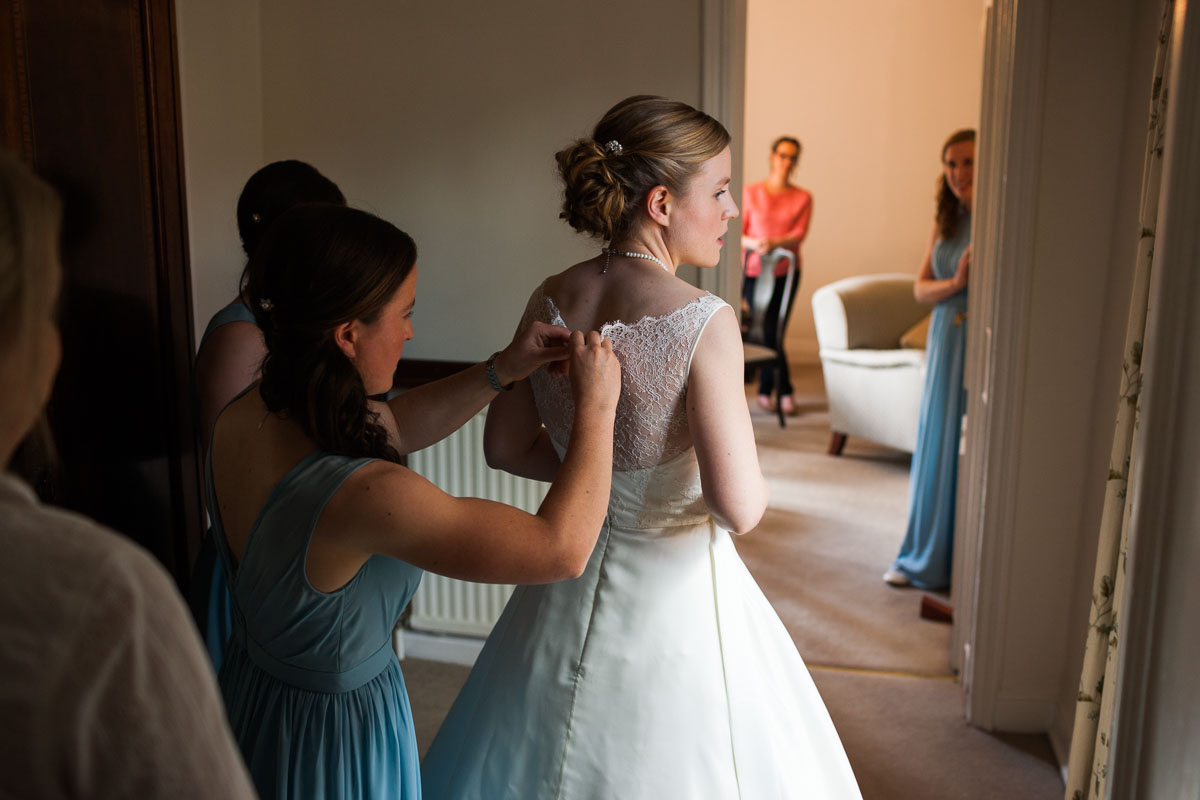
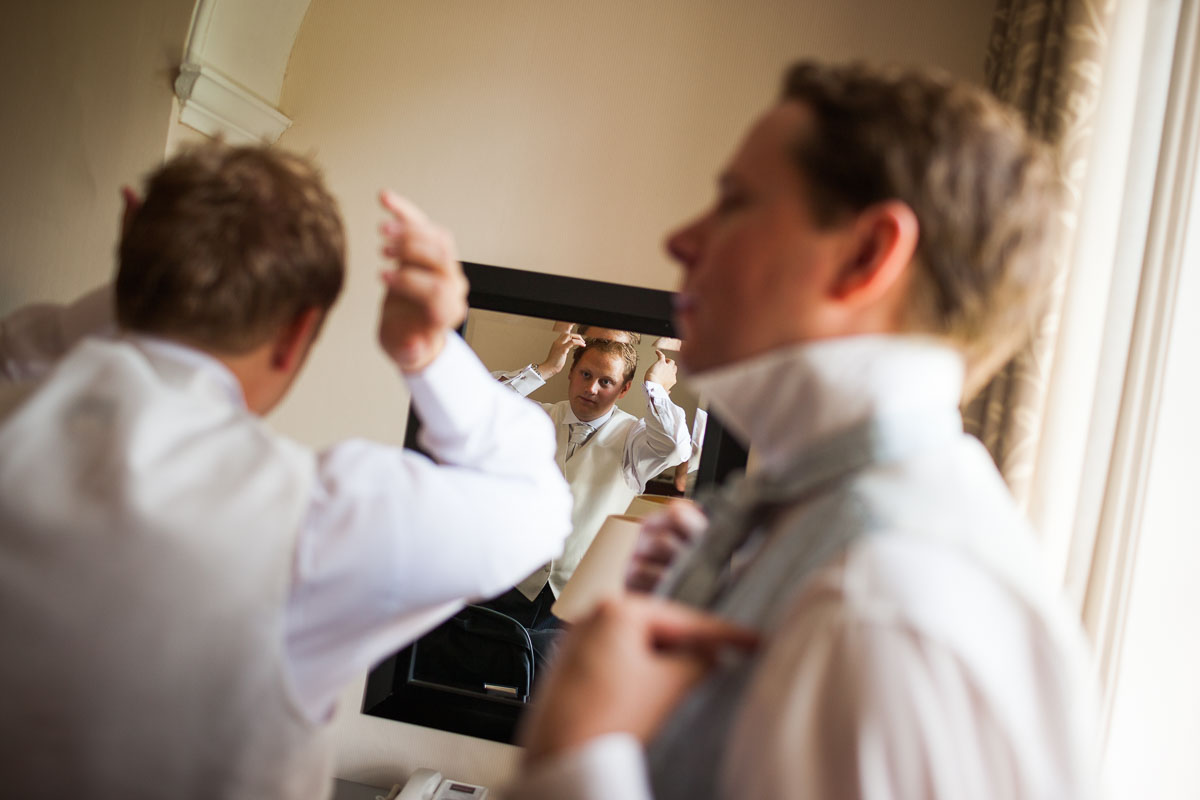
How to Photograph a Wedding Ceremony
The ceremony is the emotional centrepiece of the day, and one of the most challenging parts to photograph. Knowing how to photograph a wedding ceremony well involves combining technical control with empathy and respect.
What to focus on:
- Processional: the bride’s entrance, the groom’s first look.
- Key moments: vows, ring exchange, first kiss.
- Reactions: family, friends, and children watching in awe.
- Details: architecture, light streaming through stained glass, music sheets, or candles flickering.
Tips for photographing a wedding ceremony:
- Always check rules with the officiant because some limit movement or flash use.
- Use quiet shutter modes.
- Vary your framing (e.g., wide shots for setting, mid shots for emotion, close-ups for detail).
- Capture both the sacred and the spontaneous—laughter at a slip-up, tears at a reading.
Remember, patience and anticipation matter as much as lighting and composition when learning how to photograph a wedding ceremony.
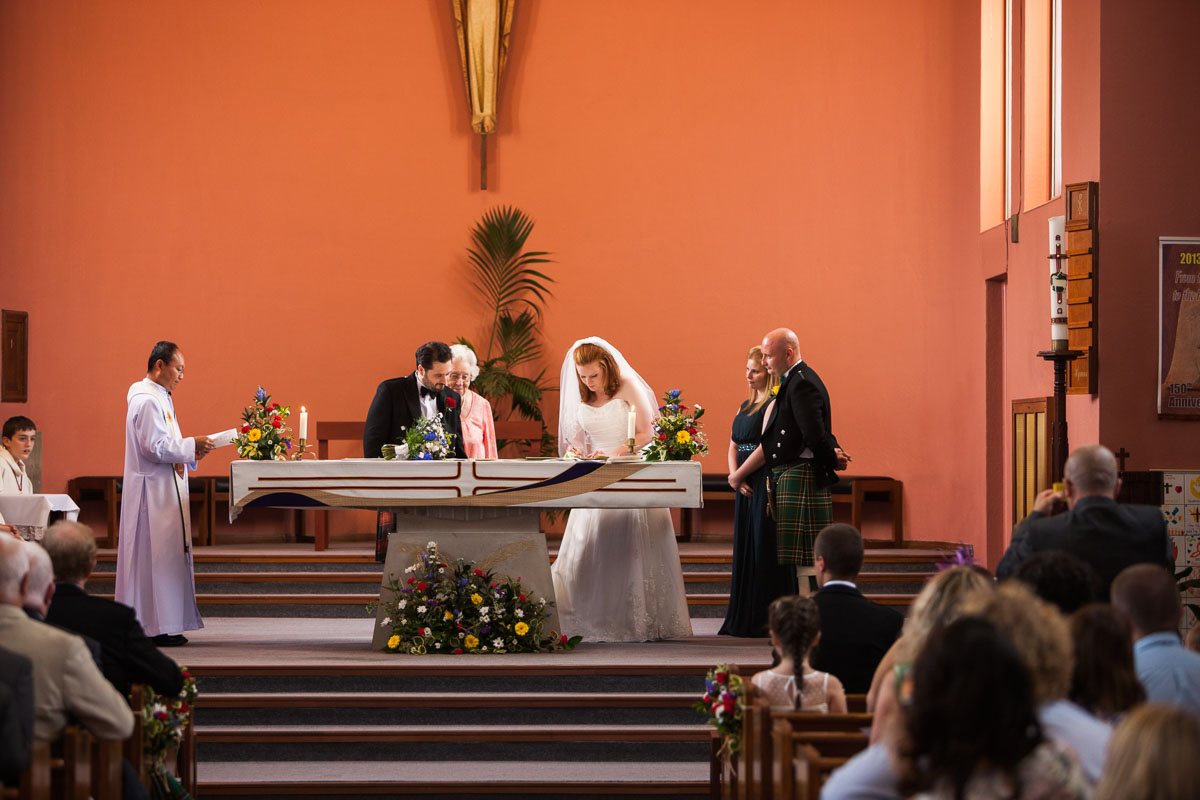
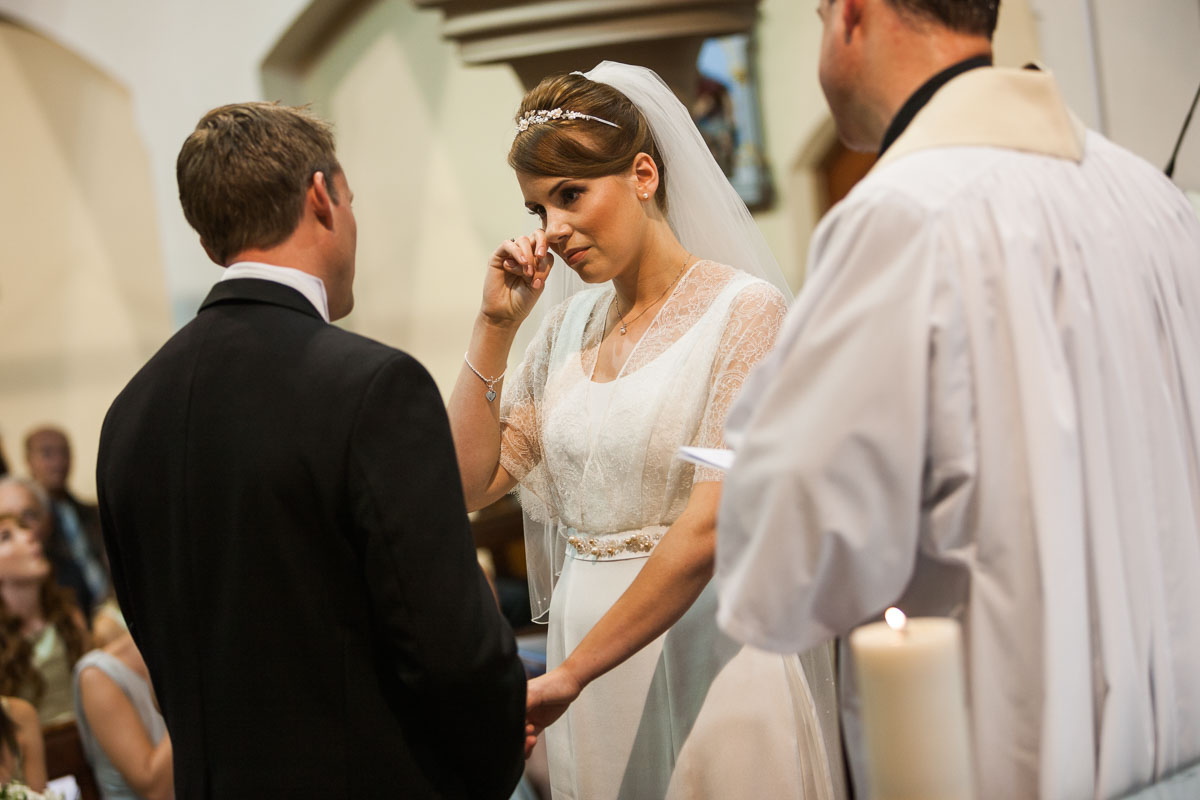
How to Photograph Wedding Group Shots
After the ceremony comes one of the most organised parts of the day: group photos.
Knowing how to photograph wedding groups efficiently and joyfully can make or break your timeline (and your couple’s patience).
My approach:
- Prepare a mental shot list and start with the largest or most important groups.
- Find flattering light and an uncluttered background.
- Use your voice and presence confidently to arrange people quickly.
- Keep energy high—laughter helps people relax.
- Mix formal and candid: once the posed shots are over, remain alert to capture spontaneous, natural interactions.
And don’t forget the unexpected groups (e.g., grandparents with grandkids, the wedding vendors, or friends from far away). These unscripted photos often end up as favourites.
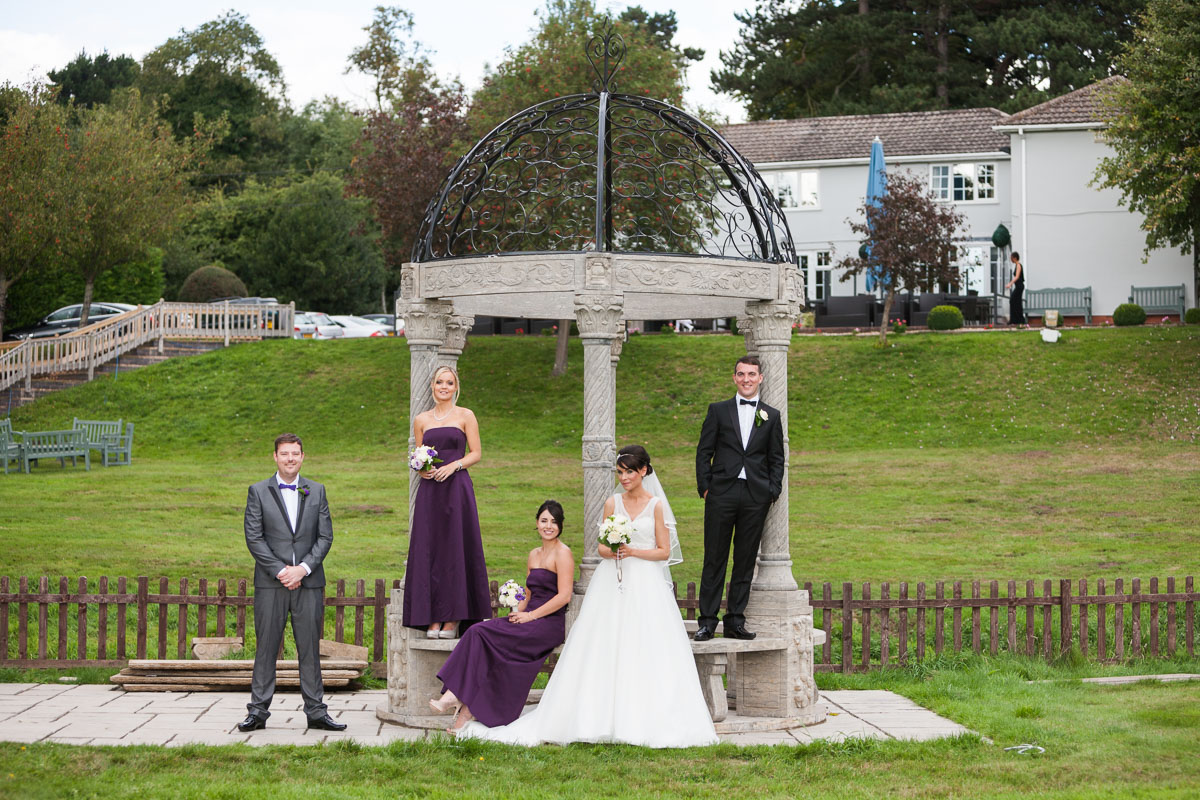
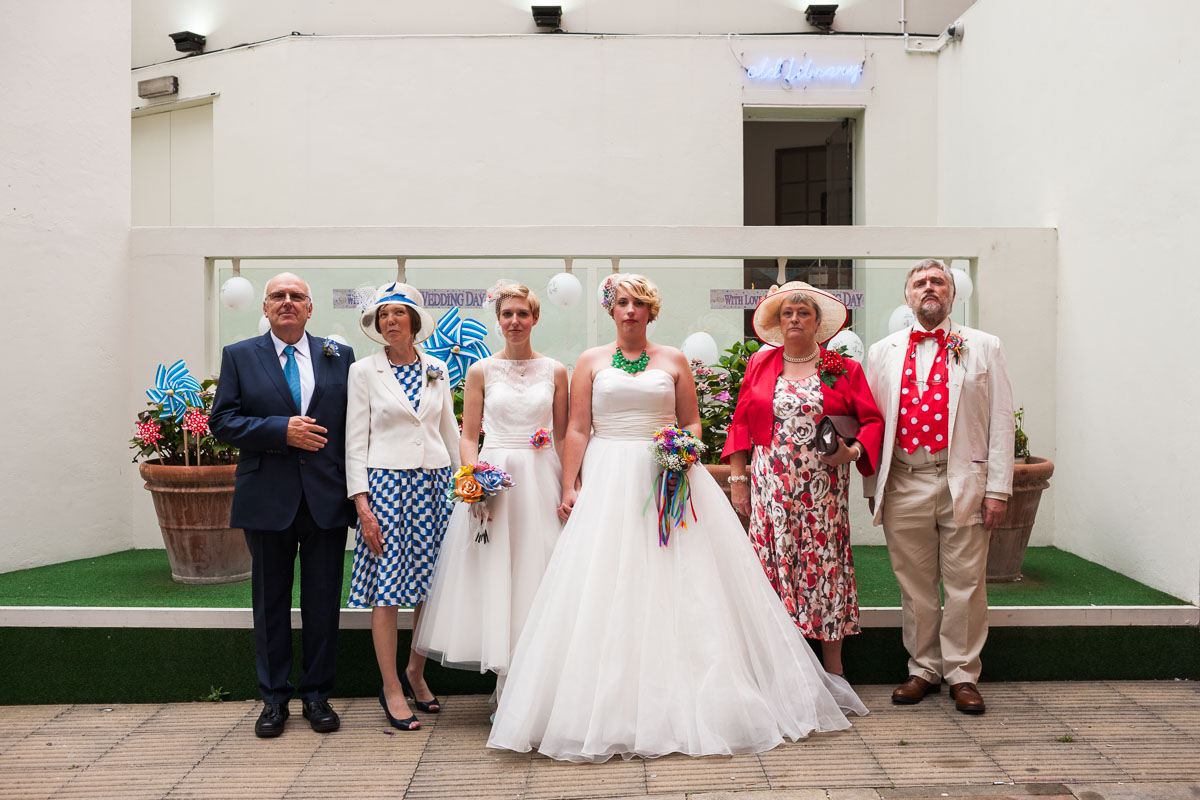
How to Photograph a Wedding Couple: Natural Portraits of the Bride and Groom
Once the formality of the group shots is over, it’s time to slow down and focus on capturing intimacy between the bride and groom.
This part of the day is about knowing how to photograph a wedding couple naturally. Thus, the goal is to capture connection, not choreography.
Key techniques for wedding couple portraits:
- Scout your portrait locations early in the day. Basically, look for interesting and uncluttered backgrounds.
- Encourage movement such as walking hand in hand, whispering, and spinning.
- Start with conversation rather than direction. Let the couple relax into themselves.
- Capture both smiles and silences.
- Experiment with angles, reflections, and framing for variety.
In particular, avoid stiff, overposed shots. The best portraits feel alive—they tell a story of the couple’s relationship and the day’s atmosphere. That’s the art of photographing wedding portraits that feel authentic.
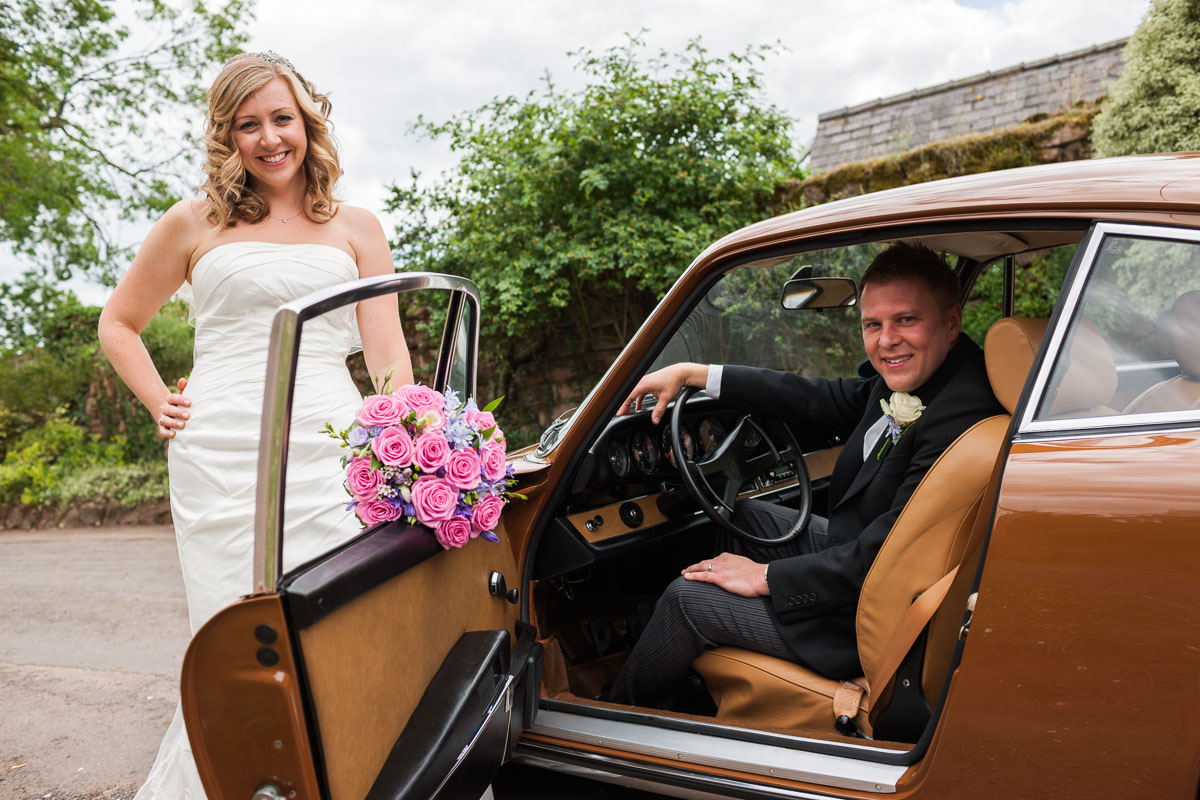
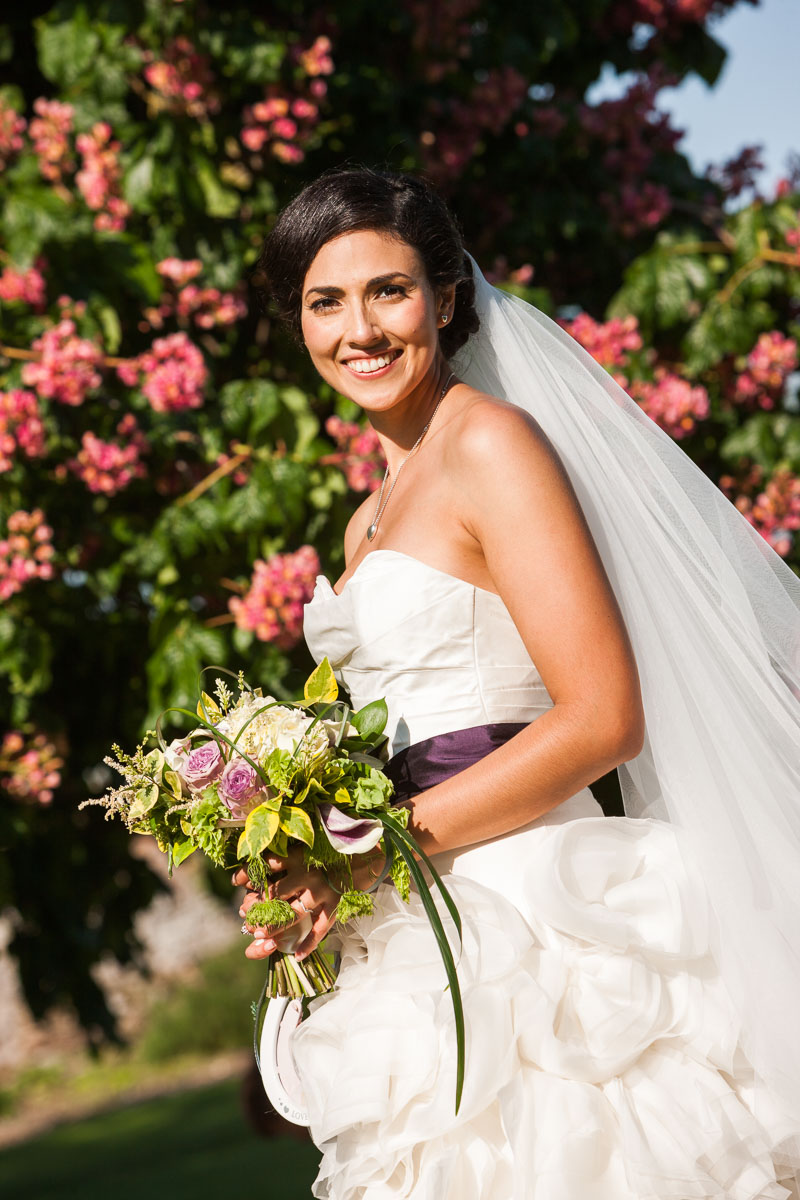
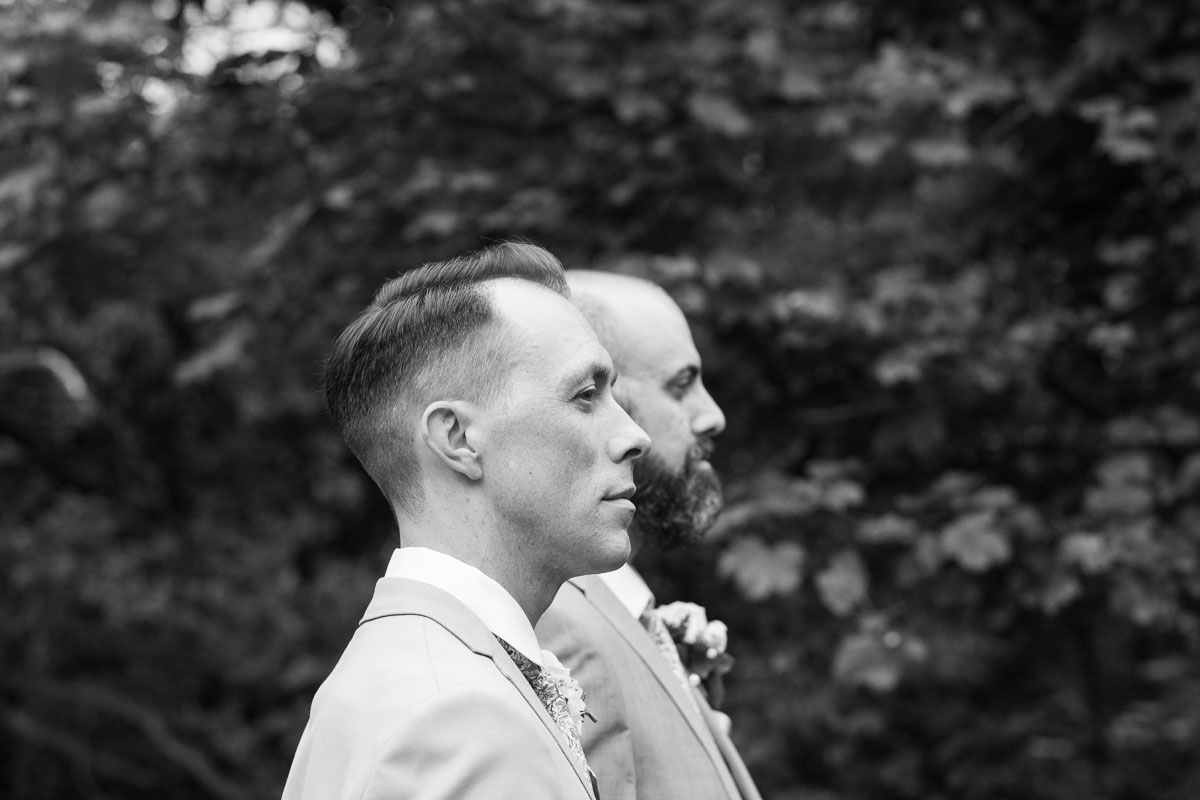
How to Photograph a Wedding Reception
The reception is where energy shifts from formality to celebration. Understanding how to photograph a wedding reception means balancing technical skill with anticipation, because there’s laughter, speeches, dancing, and fleeting, chaotic joy to see.
Toasts and Speeches
- Photograph the speaker and their reactions (e.g., laughter, tears, surprise).
- Switch between wide and close frames to show context and emotion.
- Watch your lighting: backlight can be beautiful but tricky.
Found Details and Moments
- Capture the décor, table settings, cake, and floral design. These details reflect the couple’s personality.
- Look for vendors at work, like chefs, florists, or coordinators—unsung heroes who complete the story.
- Notice the overlooked details: a hand on a shoulder, shoes abandoned on the dance floor.
Cake Cutting
- Anticipate the moment. Some couples playfully feed each other, and others are gentle.
- Use a wider lens for the atmosphere, then zoom in on laughter and frosting.
First Dance
- This part of the day is where emotion peaks.
- Use fast lenses and ambient light where possible.
- Focus on connection (e.g., a whisper, a spin, a shared laugh).
- Include guests watching from the sidelines. It tells the story beyond the dance floor.
Action and Candid Energy
- Photograph guests dancing wildly, children running, and moments of exhaustion.
- Move lightly and anticipate gestures. This awareness is the heartbeat of documentary wedding photography.
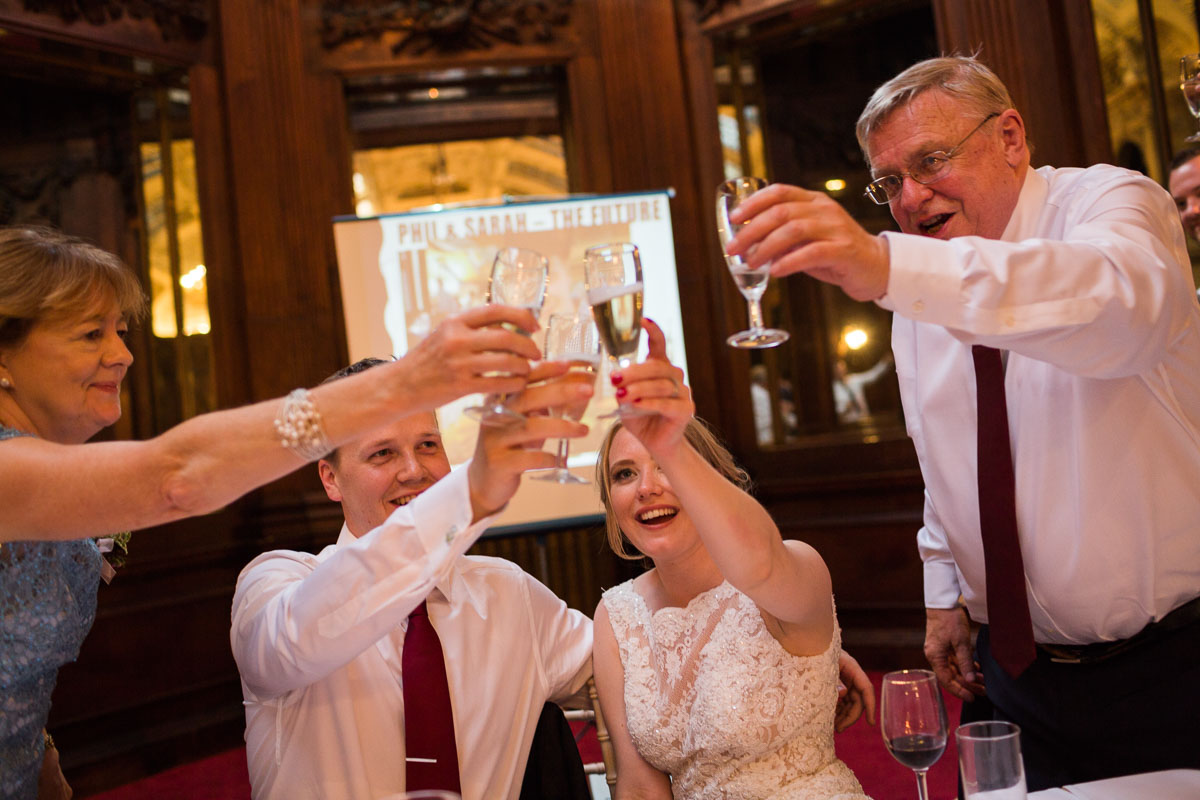
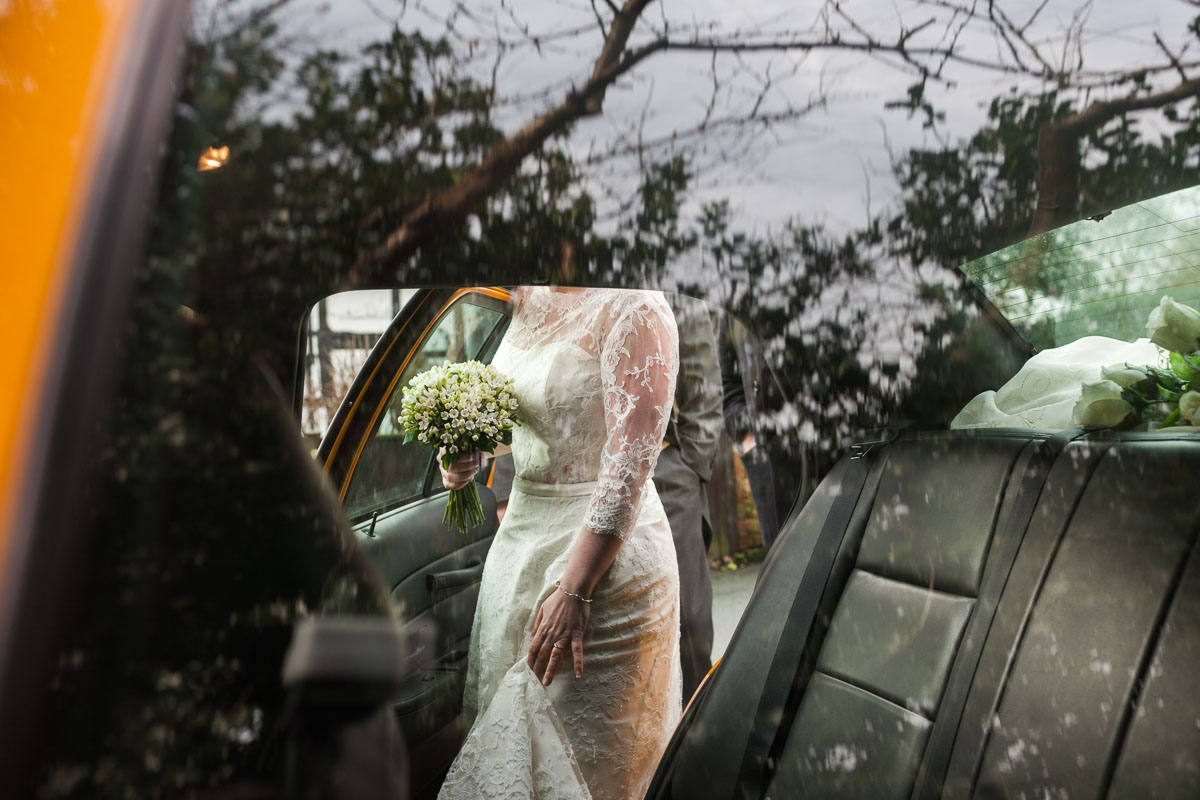
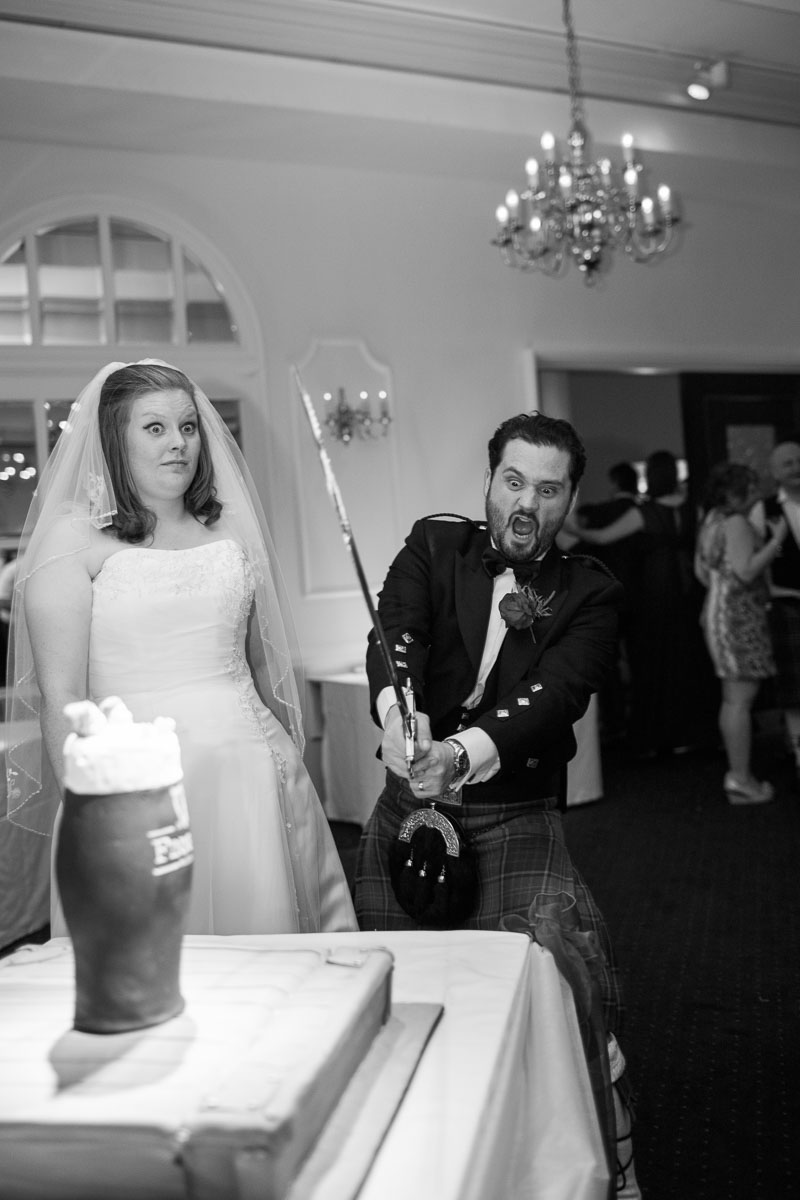
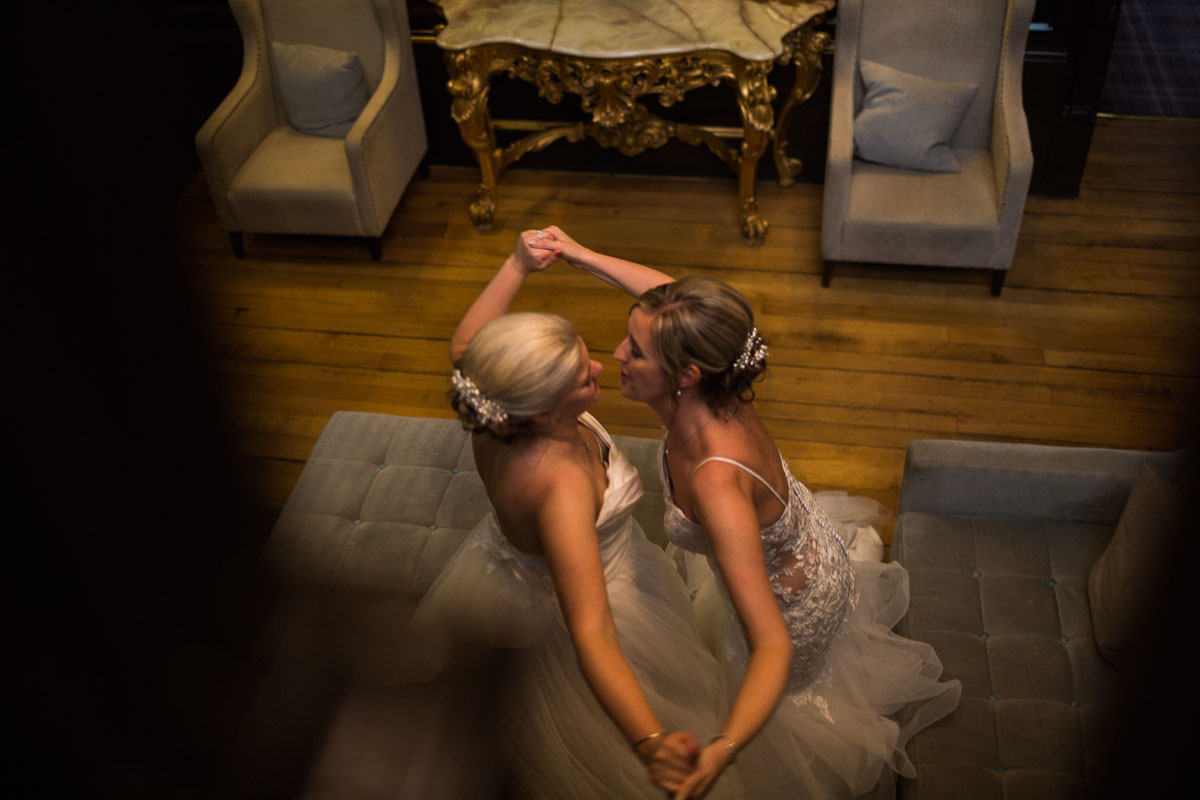
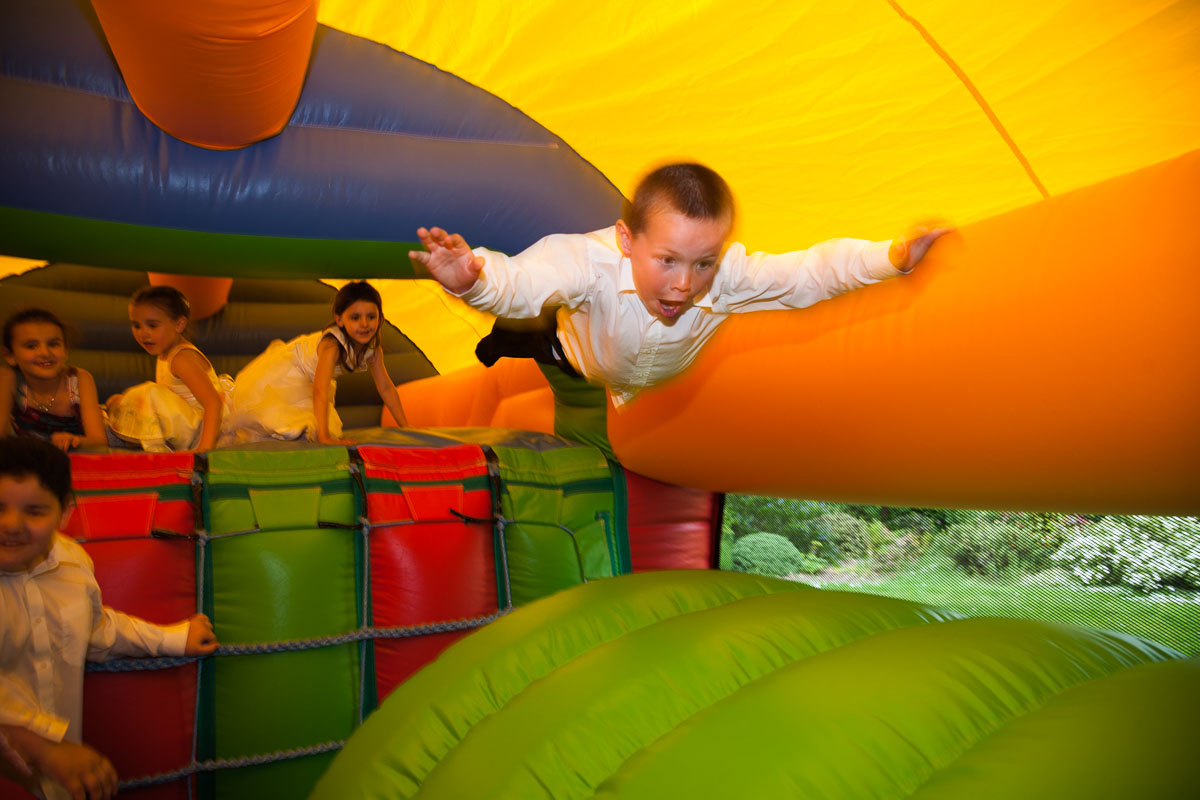
The Secret to Photographing a Wedding: Empathy and Awareness
Across every part of the day, the real secret of how to photograph a wedding is emotional intelligence. For instance, knowing how to read, anticipate, and capture genuine moments as they unfold.
Beyond the schedule, also keep your eye on:
- Emotion – joy, tears, laughter, and relief.
- Humour – the human moments that make each wedding unique.
- Action – motion, interaction, and fleeting gestures.
- Kids being kids – the honest chaos of family life.
- Vendors – the quiet craft behind the beauty.
The most memorable wedding photos are not the perfect ones, but the honest ones—captured in the split-second where real life shines through.
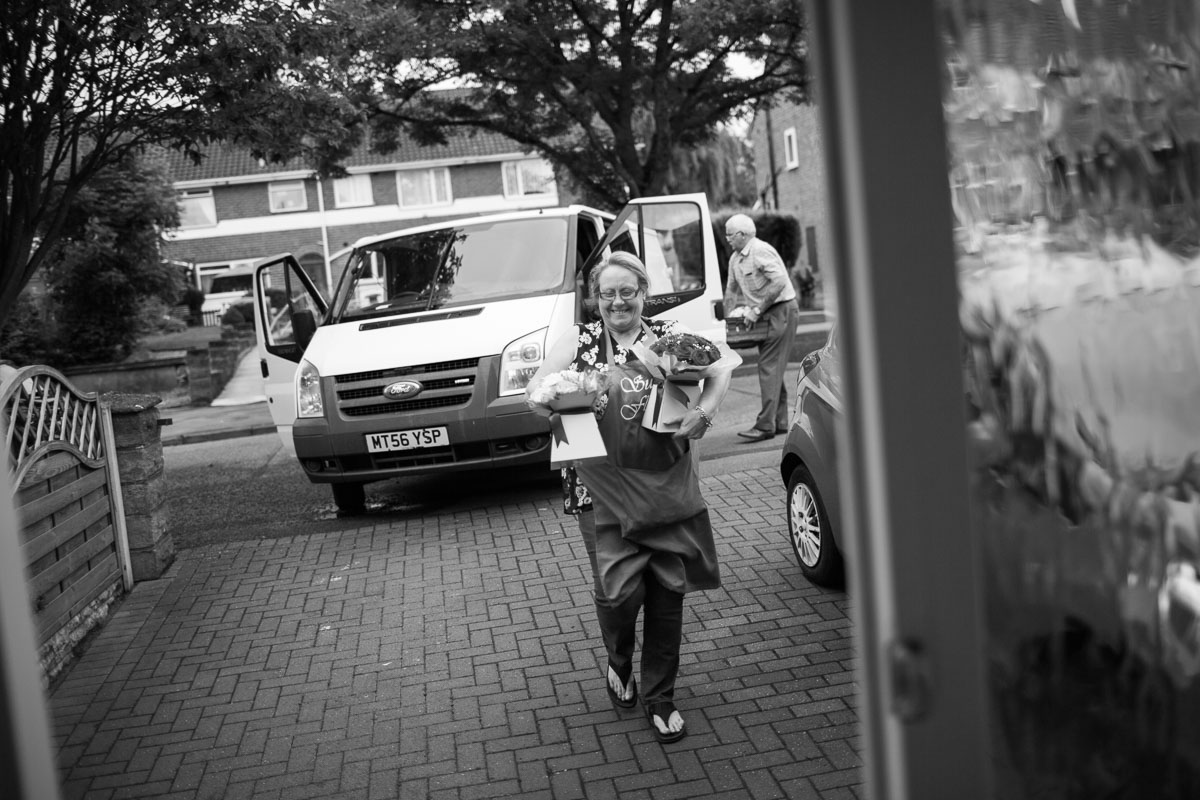
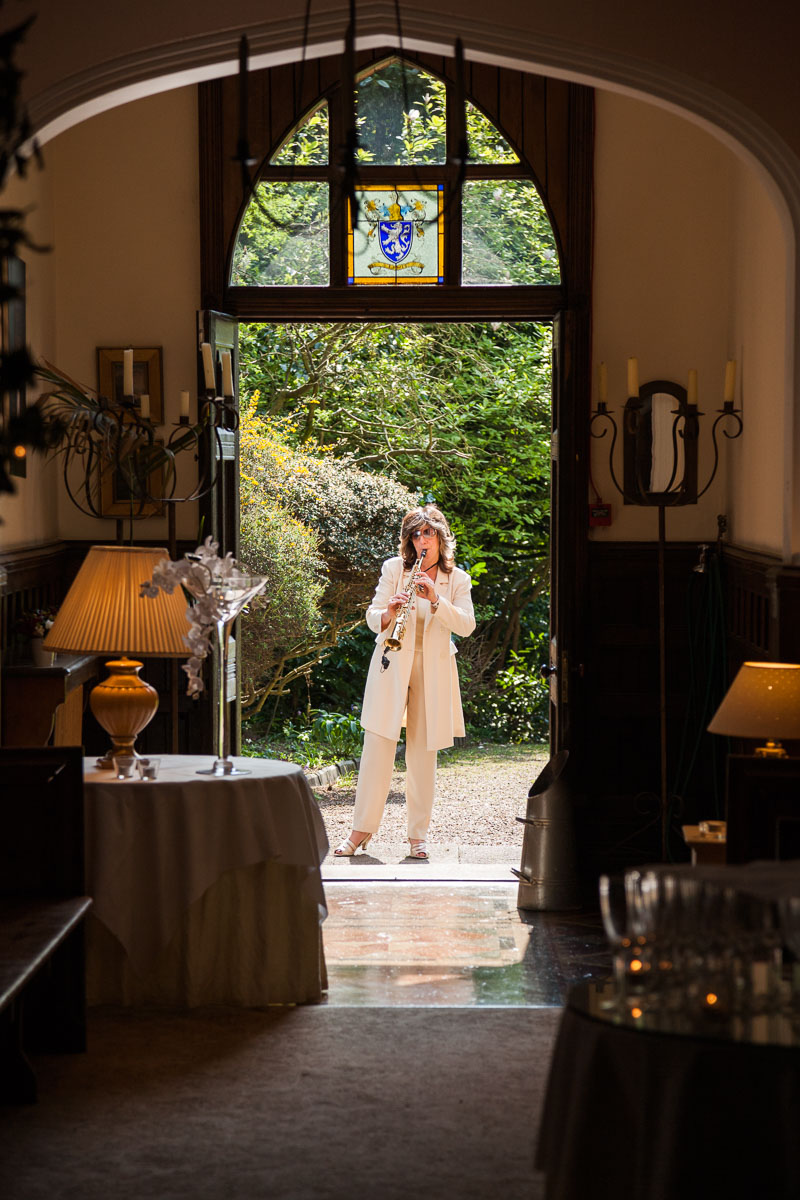
How to Photograph a Wedding from Start to Finish
Here’s how I mentally structure a wedding day to stay prepared yet flexible:
| Part of the Day | What to Focus on | What to Remember |
|---|---|---|
| Morning Preparations | Storytelling details and genuine emotions | Start with quiet observation (e.g., capture textures, light, and the natural rhythm of people getting ready). Don’t just shoot faces; photograph hands, fabrics, reflections, and laughter. |
| Arrival & Anticipation | Building atmosphere | Document travel, entrances, and greetings. These transitional moments set the emotional tone for the ceremony. |
| Ceremony | Emotion, ritual, connection | Stay unobtrusive. Focus on vows, reactions, and subtle gestures. Anticipate key moments rather than chasing them. |
| Group Shots | Efficiency and personality | Organise confidently but encourage spontaneity. Mix formal lineups with candid smiles and laughter in between. |
| Couple Portraits | Natural intimacy | Guide the couple with prompts rather than poses. Look for genuine emotion, flattering light, and movement. |
| Reception & Toasts | Reactions and atmosphere | Alternate between speakers and listeners. Capture laughter, tears, and applause—moments that show connection. |
| Found Details and Moments | The quiet beauty between events | Photograph the décor, table settings, food, signage, vendors, and behind-the-scenes activity. These fill narrative gaps. |
| Cake Cutting | Anticipation and interaction | Frame the couple with guests behind them for storytelling depth. Be ready for both tender and playful moments. |
| First Dance & Party | Joy and motion | Use available light where possible. Capture emotion through movement—spinning dresses, laughing guests, children dancing freely. |
| Evening & Farewell | Closure and reflection | Stay for the last hugs, goodbyes, or send-offs. These moments often hold the day’s emotional summary. |
In short, learning how to photograph a wedding like a professional means mastering both structure and spontaneity. That is, you’re constantly balancing what you must capture with what might unfold—and often, it’s those unplanned moments that tell the most powerful stories.
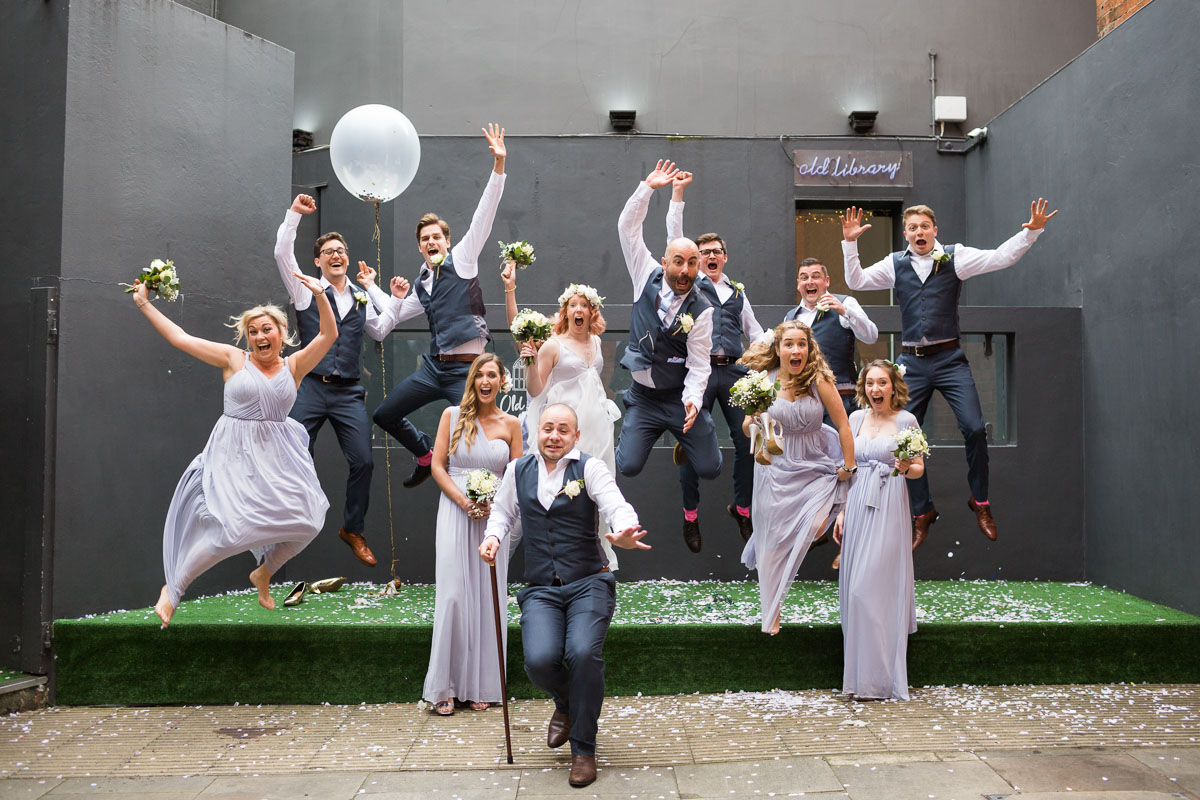
Final Thoughts: How to Photograph a Wedding Like a Pro
After two decades behind the lens, I’ve learned that knowing how to photograph a wedding is less about equipment and more about empathy. In fact, you’re not just documenting an event. You’re translating emotion into images that tell a lasting story.
As a psychologist, I now see this connection more clearly than ever: wedding photography is about empathy, timing, and understanding people. The best photographers don’t just look—they feel what’s happening and translate it into meaningful images.
So, whether you’re a beginner learning how to photograph a wedding for the first time, or a professional refining your craft, remember:
- Prepare thoroughly (shot list, venue walkthroughs, vendor liaison)
- Be technically ready (lenses, bodies, light, backup)
- But above all, train your sensitivity.
- Let your presence be discreet but warm.
- Don’t force moments; be ready when they arrive.
- Trust your intuition. Often, your best image is the one you didn’t plan.
When all is said and done, photographing a wedding is the art of seeing—with empathy, perfect timing, and a deep understanding of people.
If you found this guide on ‘how to photograph a wedding’ helpful, explore more wedding photography tips on my blog. Or get in touch to learn how I can help you tell your story through authentic, emotion-driven images.

